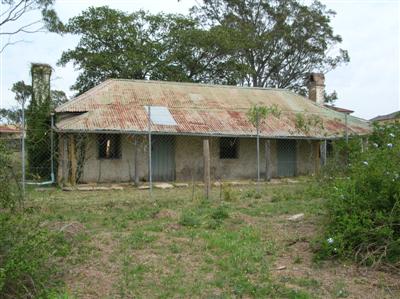 |
Original Cottage (c.1810),
facing Cornells Lane
Drawing (c) Daphne Kingston
Drawing (c) Daphne Kingston
 |
Drawing (c) Daphne Kingston
 Built
between 1810-1820. Located on Heritage Place (Off Meurant's
Lane), Glenwood (formerly
Kings Langley).
Built
between 1810-1820. Located on Heritage Place (Off Meurant's
Lane), Glenwood (formerly
Kings Langley). The
cottage comprises two buildings. The earlier built section (c.1810)
is a simple timber framed building with timber slab infill panels mud
rendered internally. The exterior is covered with weatherboard, date
unknown. It has a
hipped roof sheeted with corrugated iron over timber shingles. A wide
verandah has been added, extended and enclosed later to provide
additional rooms.
The
cottage comprises two buildings. The earlier built section (c.1810)
is a simple timber framed building with timber slab infill panels mud
rendered internally. The exterior is covered with weatherboard, date
unknown. It has a
hipped roof sheeted with corrugated iron over timber shingles. A wide
verandah has been added, extended and enclosed later to provide
additional rooms.| The original Charles Ferdinand Meurant (a convict) built the family's original home on the site of where this cottage stands today. The same year Charles died, 1844, the original home burnt down all that remained was the chimney. His son, Ferdinand Napoleon Meurant, built the second cottage around this chimney (stove outlet). I have also been working on these two cottages for many year I believe both belonged to the Meurant and that Daniel Brien's [sic] three homes in the area were on different sites. |
Original Cottage (c.1810),
facing Cornells Lane
Drawing (c) Daphne Kingston |
Drawing (c) Daphne Kingston |